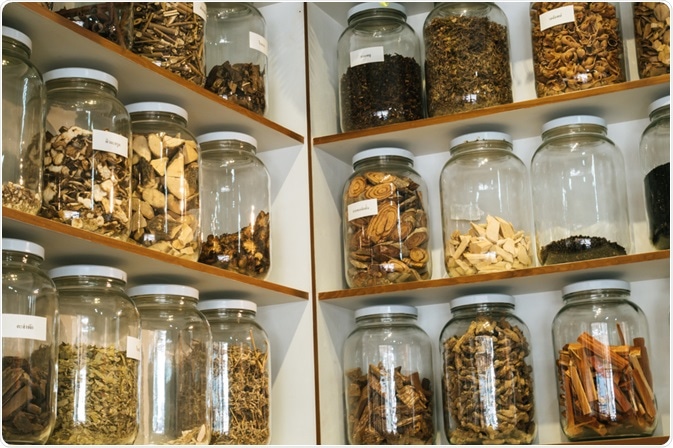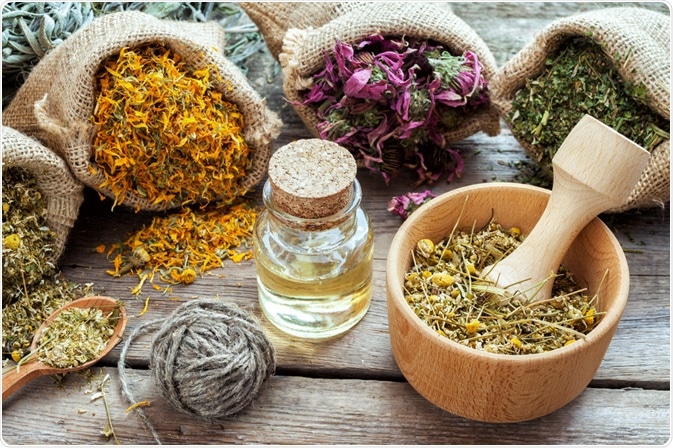Many natural products contain pharmaceutically active ingredients, and the demand for healthy herbal products is high. This is related to their use as drugs in traditional medicine such as Ayurveda, an Indian branch of traditional medicine, as much as to the global demand for healthy herbal food supplements.
The authentication of complex natural products, however, is challenging as compositions can change from harvest to harvest, making fraud-prevention by routine analysis difficult. To address the need for robust sample analysis, a trio of industrial and academic scientists from India recently reviewed the current options for herbal product authentication by chromatographic techniques.
 Ameena Matcha | Shutterstock
Ameena Matcha | Shutterstock
Plants are rich sources of pharmaceutical formulations, and many of our drugs and drug-precursors have originally been identified from herbal medicines. A prominent example is acetylsalicylic acid (ASA), a painkiller and inflammation reliever that has initially been produced from the willow tree metabolite salicylic acid.
While pharmaceutical compounds can also be produced by chemical synthesis, biological origins are preferred by many people as a “natural” source, so herbal extracts have a sustainable market.
The quality control and authentication of natural extracts such as plant materials thus face complex compound mixtures which vary strongly from production batch to production batch. While the aim of quality assurance for chemically synthesized products is to ensure the purity of the active ingredient, standardized tests for natural products need to inform both about the presence of active ingredients, and the surrounding compound profile as an indicator of the source of the product.
This profile, however, can change depending on the variability of plant sources (location of growth, year of harvest, and the method of extraction.
In an effort to achieve standardized reference profiles for compositions of medicinal plant products, scientists recently reviewed characteristic profiles of herbal medicine products analyzed by chromatographic methods coupled to various detection methods.
State of the art chromatography analysis
The investigators present examples of liquid (LC) and gas (GC) chromatography profiles for different herbal products. Liquid chromatography is a versatile application for authentication, as such products are usually aqueous or organic solvent extracts so that the solubility of ingredients in different liquids is already known and a suitable liquid chromatography method can fairly easily be selected.
Gas chromatography, meanwhile, offers a powerful separation technique as long as the compounds of interest are volatile and enter into the gas phase, or can be chemically modified (derivatized) into volatile compounds.
For both gas chromatography and liquid chromatography, the most informative detection technique is to couple the chromatography to mass spectrometry (MS), which is however also an expensive technique.
In liquid chromatography, many compounds that are characteristic for plant materials, such as polyphenols, can be detected via light absorption or fluorescence, the latter either with or without sample derivatization. These detection techniques are in fact specific and sensitive in many instances, though they are also blind for many compounds that MS can detect.
 Chamille White | Shutterstock
Chamille White | Shutterstock
Bioactivity detection as a future method of choice
For pharmaceutically active ingredients, it would be advantageous to test for compound activity, while common detection methods (MS, absorbance, fluorescence) identify and quantify compounds only based on physicochemical features.
Bioactivity tests can be carried out on eluted LC samples, but this is usually a laborious task. The review authors present efforts that have been made to couple LC separations directly to bioactivity detectors. These contain for instance proteins to which compounds of interest bind and fluorescence is observed upon binding.
As it is well established for LC methods to couple multiple detectors in-line to gain e.g. absorbance and MS detection simultaneously, such bioactivity detectors could add additional information to LC analyzes. However, such detection methods require good biosensors that are at hand and suitable for LC conditions. This leaves space for future research on novel detection methods for chromatographic separations.
Source
Govindarajan R et al., High-Performance Liquid Chromatography (HPLC) as a Tool for Standardization of Complex Herbal Drugs. Journal of AOAC International 2019, 102 (4), 986; https://doi.org/10.5740/jaoacint.18-0378.
Further Reading
Last Updated: Apr 6, 2023